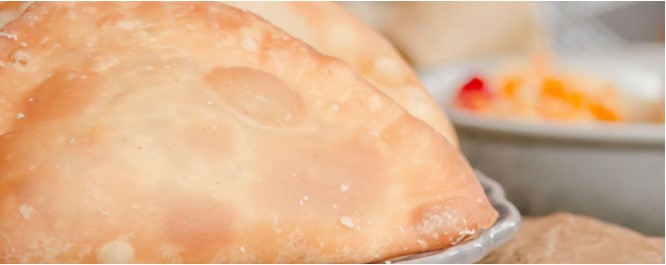By Parkdean Resorts on 10/03/2017
Britain is renowned for its hearty, fulfilling and tasty traditional food. Many dishes have a strong regional influence, which is often included in the name, and have become popular all over the country.
Many people don’t realise that these foods and dishes often have a strong history behind them. From Yorkshire puddings to the Lancashire hotpot, we’ve taken a look into the origins of some of Britain’s most well-known traditional foods, and where you can try them on your next holiday with Parkdean Resorts.
Cornish Pasty
Pasties are thought to have been around in Cornwall since the 14th century, however, it was the influx of Cornish mining in the 1800s that saw them surge in popularity. An ideal snack for people working in the mines, pasties became a staple mid-morning “crib” or “croust”, which is Cornish dialect for a “bite to eat”.
Cornish pasties now have a protected status, which means that they must be prepared in Cornwall and made using the traditional recipe if they are to be described as Cornish. The filling should include roughly diced or minced beef, sliced or diced potato, swede, onion, and seasoning. The pastry casing should be golden in colour, and robust enough to retain the pasty’s signature “D” shape, which is crimped on one side.
If you fancy sampling a traditional Cornish pasty on your next holiday to Cornwall, then we recommend heading to one of the region’s many traditional bakeries. Chough Bakery in Padstow has been cooking up award winning pasties for nearly 30 years, and they’re made with locally sourced ingredients. Just 30 minutes away from St Minver Holiday Park and rated 5* on Trip Advisor, the pasties here are made extra Cornish by adding clotted cream.
Video sourced from the Cornish Pasty Association
Yorkshire Puddings
The Yorkshire pudding is one of the most important components to a traditional British Sunday roast dinner. They’re thought to have been eaten for centuries, and first became popular when wheat flour started to be used for making cakes and puddings. Cooks in the North of England started using the fat from dripping pans to cook a batter pudding whilst the meat was in the oven, and the first recipe for “dripping pudding” was published in 1737.
Cookery writer Hannah Glasse was the first to rename this recipe as a “Yorkshire pudding” in 1747, although they were much flatter than the versions made today. They were traditionally served as a starter with plenty of gravy, as it was an affordable way to fill up the people eating the meal. It’s still common for Yorkshire puddings to be on starter menus in pubs and restaurants today.
If you’re planning a holiday in Yorkshire and looking to try a great Sunday roast complete with this tasty treat, then try out one of the many pubs and restaurants in the countryside. The Star Inn at Sancton is just 40 minutes from Barmston Beach Holiday Park, and is renowned for its award-winning Yorkshire puddings.
Video sourced from Haste's Kitchen
Haggis
Haggis is Scotland’s national dish, and is a fascination to people all over the world - mainly due to the folklore surrounding it. Most Scottish people will tell you that haggis is “a small four-legged creature that lives in the Highlands and has two legs shorter than the others, so it can run around the mountains without toppling over. It can easily be caught by running around the hill in the opposite direction.”
Jokes aside, haggis is actually a savoury pudding that combines meat with oatmeal, onion, spices and salt. Traditionally, haggis was cooked in a sheep’s stomach, although these days it’s usually cooked and sold in a synthetic sausage casing. Often served up with neeps and tatties (turnips and potatoes), it’s a Scottish favourite all year round. Haggis is also the star attraction of the annual Burns Night celebrations on 25th January, where people commemorate the life of famous poet Robert Burns.
The first recorded mention of a haggis style sausage dates back from the ancient Greek playwright Aristophanes in 423 BC, although the origins of the name remain a mystery. If you’re staying at Grannie’s Heilan’ Hame Holiday Park, then we recommend visiting George Cockburn & Son butchers just outside of Inverness, who have a fantastic reputation for being champion haggis makers.
Lancashire Hotpot
The Lancashire hotpot is a one-pot stew which is thought to have become popular during the 19th century, when Lancashire’s cotton industry was booming. The dish was simple and quick to prepare, and could be left for hours to cook on its own whilst people went out to work. Hotpot was also popular during the mining era, and would often be wrapped in a blanket so it was still warm at lunchtime.
A Lancashire hotpot traditionally consists of readily available ingredients including lamb or mutton, carrots, onion, and stock, before being topped with a layer of sliced potatoes. Oysters were also added to the mixture, as they were once much cheaper than they are today. The dish is best slow-cooked in a heavy pot at a low heat, so the flavours infuse over a few hours, transforming it into a tasty stew.
Although this warming dish has always been popular, it’s recently experienced a revival thanks to chef Nigel Haworth. He serves it in all of his establishments, and it even led him to victory in the main course category of BBC 2’s Great British Menu in 2009. If you’re looking to try out a delicious Lancashire hotpot for yourself, one of Nigel’s pubs, The Clog and Billycock, is just 30 minutes from Todber Valley Holiday Park.
Video sourced from Great British Chefs
Have you tried out any tasty regional dishes? If so, we’d love to hear about it on our Twitter page.


